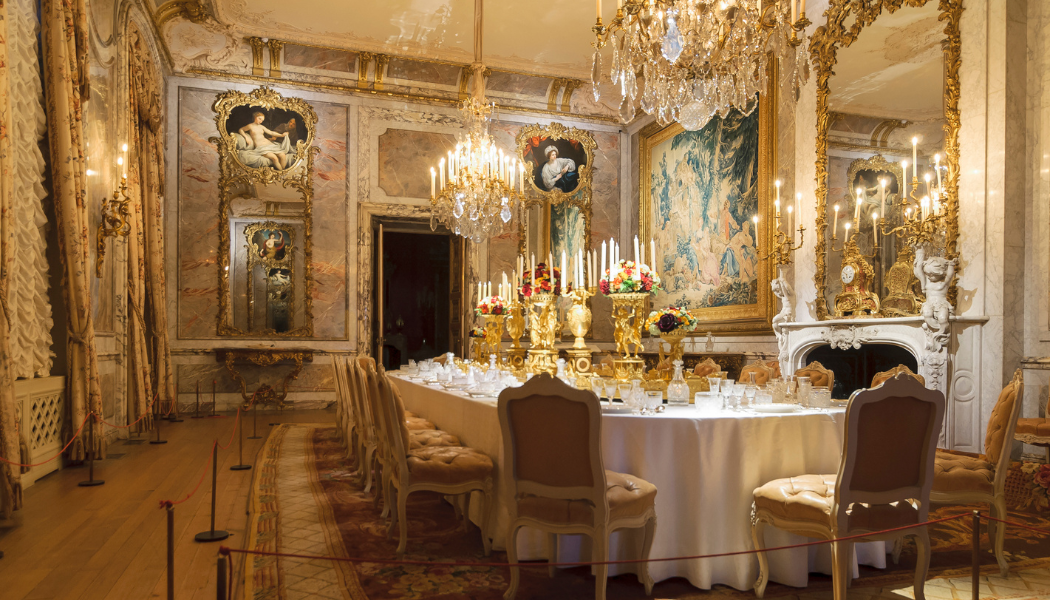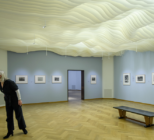In a historic house, the right lighting not only highlights artwork and objects but can be used to subtly influence visitor flow and the relative importance of a series of exhibits, both of which are a necessity when signage isn’t an option. That’s the view of Andrew Molyneux, Director of art lighting specialist TM Lighting.
Speaking to Advisor about some of the projects carried out by the company, Molyneux explained that the right combination of light can “create a visual hierarchy, and help to pull people around a space with light.”
Deciding on the design of that journey is a collaborative process, he said, and one with added complexities. With fragile exhibits and artwork, the design of the lighting in a location must also take into account conservation and the danger of heat and light damage.
He said projects begin when first walking into a space, and typically noticing problems such as reflections in the paintings. The second thought on first seeing a room highlights a further complexity; “how am I going to get power to those locations?”.
While Molyneux said that this is ultimately a task for an electrician, it was important to be sympathetic to the space and “with the best will in the world you might not be able to get power to a certain location”.
When lighting rooms in historic houses, there are two types of lighting. The more obvious requirement of picture lights is followed by a secondary ‘layer’ of lights, including – for example – table lamps and wall lights to change the way a room “feels”.
Molyneux points to TM Lighting’s work at Kenwood House, in which one-room houses many world-famous works including a late self-portrait, ‘Portrait of the Artist’, by Rembrandt and ‘The Guitar Player’ by Vermeer.

Speaking of the project, Molyneux said: “If we lit every single piece at exactly the same level, nothing would have presence”.
“The room is rich with thousands of wonderful paintings and great artists but these are the two that are really special.”
As visitors walk into the room the Rembrandt is positioned in a prime spot, and is lit slightly brighter than the other paintings, so visitors “automatically walk up to that first,” he explained. “As you pan around the room, the Vermeer too is lit slightly brighter.” Once these pieces are established the visitor can then wander around the rest of the room.
This subtle, subconscious guidance is important, Molyneux said, because “it’s very easy to wander into a room and to wonder ‘what is the most special painting, where is that Vermeer?!’”
In historic houses, another consideration is the level of adaptability of the room to house different collections.
Each project TM Lighting has taken on has posed a new challenge, and at Waddesdon Manor in Buckinghamshire, Dining Room chandeliers were just that.
The company lit the room with accent lights integrated into the crystal chandeliers, the high colour rendition lighting ensuring that the true colour of its subjects was revealed. The lighting was set to a conservation-friendly maximum on the natural fibres of the wall-hung tapestries.
The work carried out created “quite a dramatic before and after”, he said, and lighting from the centre of a room doesn’t often work but in this instance paintings above eye level were lit upward.
“The reflection points were in the ceiling, and tapestries aren’t reflective so you can – and should – light them fairly flat or you pick up all the waves and shapes in the fabric.”

Another learning from this particular project was uplighting. Using one of Waddesdon Manor’s Guardi paintings as an example, Molyneux explained “usually we would downlight artwork,” he said, “but in this instance, we needed to do the opposite and put more light into the room in an indirect way”.
Considerations were made for the light and dark areas of the painting, as well as the broader effect in the room. “Much of the detail in Guardi’s paintings at Waddesdon are in the lower half of the work so uplighting enabled these intricacies to be emphasised, while evenly lighting the whole canvas. The uplighting also cast light up onto the ceiling, increasing the ambient lighting in the room.”
And the installation of these lights also required consideration for the wider visitor journey, with lighting through a nearby doorway to “pull” the visitor around the room.
“Every house is different and we find a unique way to get the light where we need to”, he said.
While Molyneux is committed in each project to finding the perfect lighting for every room and piece, he is conscious to ensure the lighting itself does not take focus away from its subjects.
“Our intention is to make our lights blend into the background, illuminating an artwork with the highest quality light that does not distract from the interiors in which they are placed. This enables a piece to come to life.”










